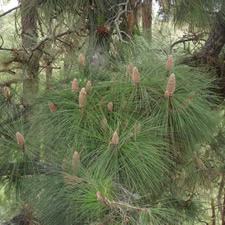When thinking of plants with medicinal uses, it’s hard not to picture cheesy marketing campaigns that tout unbelievable “miracle cures”. While much of the holistic approach to medicine is up for debate, there is little doubt that some plants actually do have legitimate medical uses. The real questions for the outdoor lover, though, are whether they are common enough to find and practical enough to use. On a camping, hiking, or hunting trip, the fact is you simply won’t have the resources to perform anything complicated-like an extract-to use a given plant as medicine. So, here are five common plants that are useful to the outdoor adventurer right out of the ground.
1. Cranberry Shrubs
In the Northeastern portion of the contiguous United States, both wild and cultivated cranberries grow in abundance. In the wild, they are small shrubs with leaves only a few millimeters wide. The berries, though you may be used to the deep red of certain cranberry cultivars, are actually a pale pink naturally. When eaten, they act as a relatively strong diuretic, which can help you get rid of a nagging Urinary Tract Infection. Additionally, their high levels of dietary fiber can help to relieve the symptoms of constipation.
2. Blackberries
Though the plant is highly concentrated in the Pacific Northwest, it can be easily found across the country. Its berries are easily by their aggregate nature, usually having many small berry-like fruits attached to form one structure. Though the berries are edible, it is the roots of the blackberry plant that hold its medicinal properties. The astringent properties of the root make it an excellent treatment for diarrhea and dysentery when brewed into a tea.
3. Pine Trees
 One of the most recognizable trees in North America, the pine is a member of the Evergreen family. Though not known for being edible, cutting into the tree and extracting its sap is a common medicinal practice. If, for example, you chip a tooth or are in need of an emergency dental filling in the wild, the pine’s resin will do the job. It might be an offbeat medicinal purpose, but it works.
One of the most recognizable trees in North America, the pine is a member of the Evergreen family. Though not known for being edible, cutting into the tree and extracting its sap is a common medicinal practice. If, for example, you chip a tooth or are in need of an emergency dental filling in the wild, the pine’s resin will do the job. It might be an offbeat medicinal purpose, but it works.
4. Walnut Trees
Found mostly on each coast, the walnut tree is known for its tasty fruit. But besides being edible, the little walnut has an interesting use before ripening. When boiled in water, the resulting solution is an effective antifungal agent. So if you’re suffering from athlete’s foot or another fungal ailment on a camping or hiking trip, give the walnut water trick a try.
It’s a little surprising that some of the plants outdoor lovers so often overlook can actually be quite useful. By working on your plant recognition abilities and having a willingness to experiment with alternative treatment, you can put these underrated natural treasures to great use.

